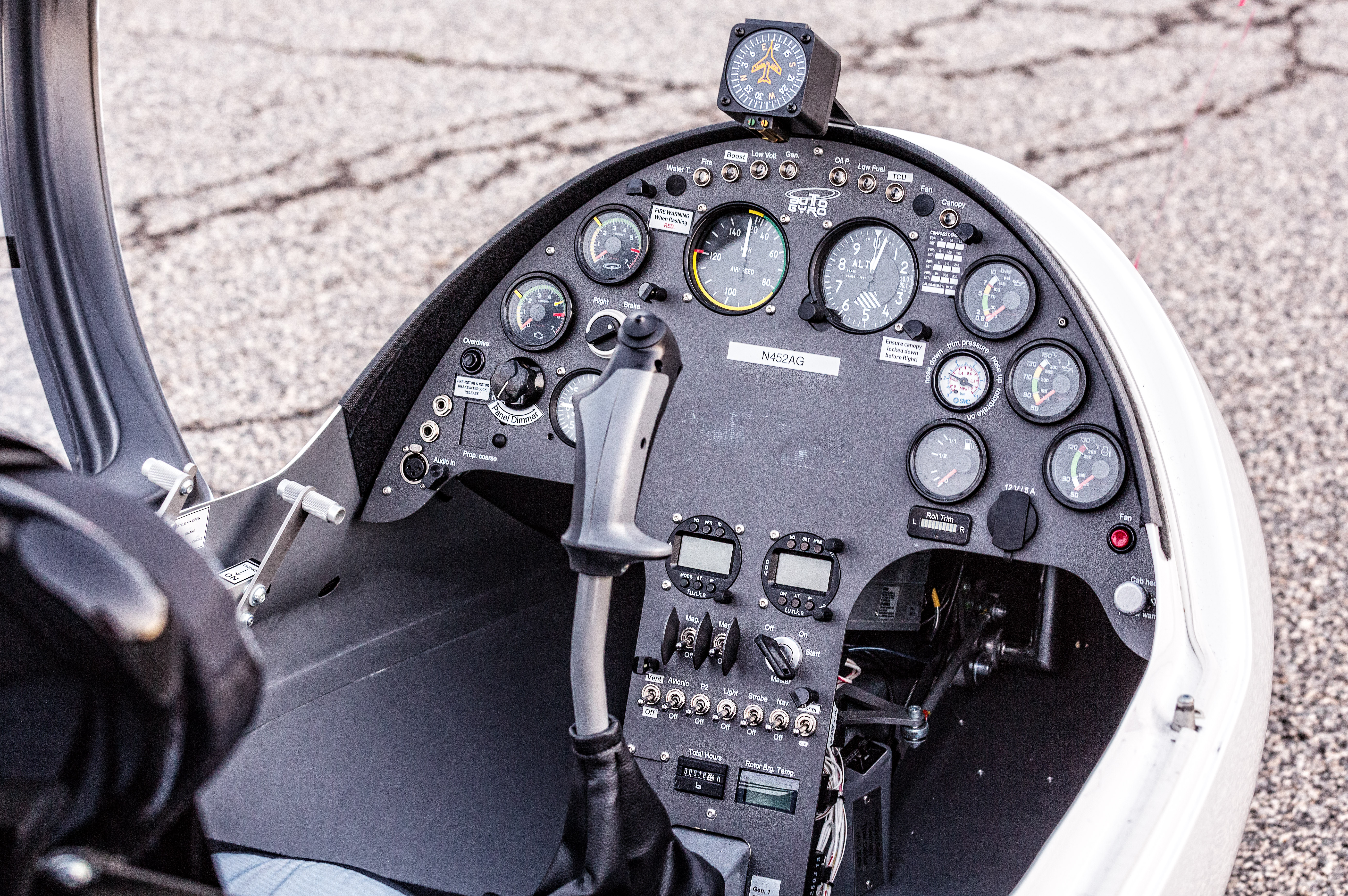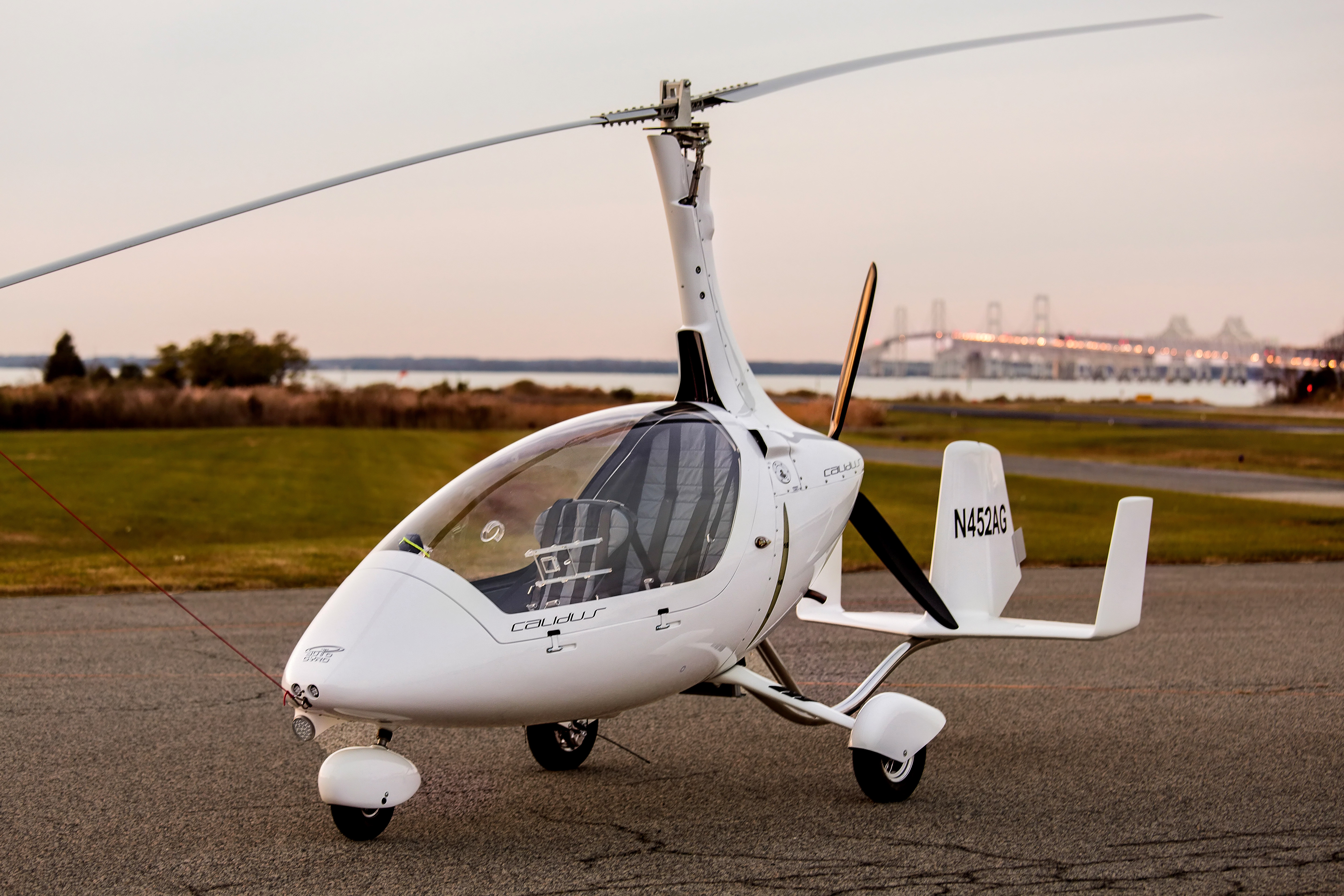Two German gyrocopters certified in primary category
Clears way for leasing to flight schools
You might find something interesting at your flight school soon. FAA certification of the tandem-seat Calidus gyrocopter by AutoGyro located in Germany means flight schools can now train gyrocopter pilots and rent out the aircraft.
It takes about 10 hours to transition to the rotorcraft at less than $250 per hour including the instructor. Rental rates are predicted to be at typical small aircraft rates.
The turbocharged Calidus, a Latin-based name implying a hot-flying machine, costs 100,000 Euros. On the day this was written that equated to $107,000. The non-turbo model costs 90,000 Euros, or $96,000 as of Dec. 6.
Next year the company plans to certify its side-by-side two-seat Cavalon and open-cockpit, tandem seat MTOsport in the primary aircraft category. Paperwork has been submitted. Designated Pilot Examiner Bob Snyder, in charge of winning primary aircraft certification for the models, said the open-cockpit design allows pilots to feel the relative wind and aid in coordinated flight.

Snyder provided a demonstration in the Calidus for AOPA. The rotorcraft typically has vibration throughout the flight from its autorotating rotor that is spun up prior to the takeoff run. It maintains rotation from the forward flight of the rotorcraft, using the thrust from a rearward-facing Rotax engine. Making the aircraft heavier speeds up the rotor while making it lighter tends to slow it down. Gyrocopter pilots avoid weightless flight but not aerobatics. A British airshow pilot uses an AutoGyro in his act of swoops, dives, tight downward spirals, and fast turns.
The Calidus typically cruises at about 100 mph. Certification by the Bay Bridge company, which was sold back to the factory in recent weeks, began in 2012. “Realistically, we didn’t know what we were doing and the FAA also had to relearn the primary certification process,” Snyder said. He said the FAA was extremely helpful during the certification process. AOPA and the Experimental Aircraft Association helped form the rules for the primary aircraft category. Annapolis-based AutoGyro legal advisor and former AutoGyroUSA owner Tim Adelman said there hadn’t been a certification in the primary category in 30 years. Snyder said he believes there are only three aircraft certified as primary aircraft including the AutoGyro Calidus. The other aircraft certified in the primary category are the Quicksilver GT-500 and Rans S-7C, according to the FAA.
The FAA was asked to confirm those reports but had not found an answer by press time. Gyrocopters are not part of the light sport aircraft category, but pilots certified under light sport rules can fly a gyrocopter. Pilots at the private or higher rating level who do not have a rotorcraft rating will need to take a written exam in addition to the practical test. The gyrocopter can be bought as a kit and flown in the experimental category, but Snyder said the company has learned customers want a completed, factory-built aircraft they can fly away.
During the demonstration flight Snyder brought the aircraft to zero airspeed but noted the Calidus was then safely sinking like an elevator. He could reverse direction in what seemed like the rotorcraft’s own length. Takeoff and landing distances are extremely short. Snyder pointed to a circular drive of a luxury home on Chesapeake Bay and said he could land within the circle if necessary. Snyder said pilots have little trouble with the landing, but must learn new procedures to accomplish the takeoff. The company is based at Bay Bridge Airport at the east end of the Chesapeake Bay Bridge connecting Annapolis to Maryland’s Eastern Shore. The Cavalon used for training at Bay Bridge Airport is experimental and therefore can’t be rented, a situation that will be resolved with the certification in the primary category.
Asked what the gyrocopter brings to flying that is unique, Snyder said, “You can’t fly at 1,000 feet above ground level and feel safe about it in a Cessna 172. In a gyroplane you can. When you show up for the hundred-dollar hamburger, you will be a rock star.” It is especially fun to fly in wind that would keep most fixed-wing pilots at home, he said. “It chops it up.” It takes airplane skills, not helicopter skills, to fly it, he added.
When flying to Oshkosh from Maryland, Snyder said he can read road signs to tell him where he is, especially on the Indiana-Michigan border.
The rear seat was tight but not uncomfortable. Visibility from the clear canopy was exceptional. Snyder has about 2,000 hours in a gyrocopter and has sold his fixed-wing aircraft. Despite the vibration, Snyder said Pinewood Group Studios uses an AutoGyro for filming.
There are AutoGyro instructors throughout the country. A structured online course is used for instruction. The AutoGyroUSA website shows dealers in Arizona, Arkansas, Florida, Idaho, Louisiana, Michigan, Texas, and Utah.





